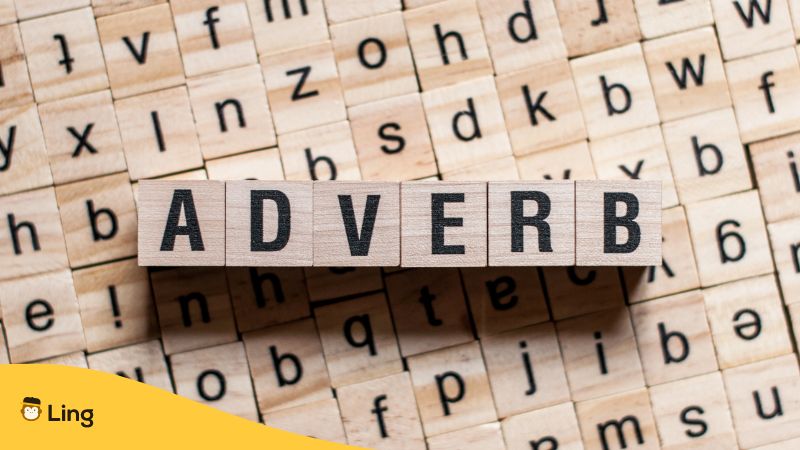Adverbs are an essential part of any language, and learning them can help you speak and write more clearly and accurately. Punjabi adverbs or ਕਿਰਿਆ ਵਿਸ਼ੇਸ਼ਣ (kiria visesana) are used to describe verbs, adjectives, and other adverbs, and they can help you convey your meaning more precisely. For example, you might use an adverb to indicate the time, place, or manner in which something happened or to provide more information about the intensity or degree of an adjective or verb. Want to learn more? Let’s start!
Learning adverbs can be challenging for beginners of any language. This is especially true for learners of Punjabi, as it is a complex and nuanced language with unique grammar and syntax. Since Punjabi grammar allows this to be used in multiple forms, it is often hard to define or distinguish from other parts of speech. Additionally, some adverbs are specific to a particular culture or region and may not be understood or used in the same way in other parts of the world.
But hey! That doesn’t mean that it’s impossible to master! Let’s dive deeper into how it works below.

Types Of Punjabi Adverbs
Adverbs Of Place
It gives us an idea of where something has occurred. Examples are:
| English | Punjabi | Pronunciation |
| Here Over there Right Left On the Down Away Near Back Next Front Before | ਇੱਧਰ ਉੱਧਰ ਸੱਜੇ ਖੱਬੇ ਉਤੇ ਥੱਲੇ ਦੂਰ ਨੇੜੇ ਪਿੱਛੇ ਅੱਗੇ ਸਾਹਮਣੇ ਪਰ੍ਹਾਂ | Idhara Udhara Saje Khabe Ute Thale Dura Nere Piche Age Sahamane Parham |
Adverbs Of Time
It tells us when something has happened.
| English | Punjabi | Pronunciation |
| Today Yesterday Nowadays Tomorrow The day after In the morning In the evening From time to time In the afternoon At night Then When Ever When Every day Half past three | ਅੱਜ ਕੱਲ੍ਹ ਅੱਜ-ਕੱਲ੍ਹ ਭਲਕੇ ਪਰਸੋਂ ਸਵੇਰੇ ਸ਼ਾਮੀਂ ਤਰਕਾਲੀਂ ਦੁਪਹਿਰੇ ਰਾਤੀਂ ਉਦੋਂ ਕਦੋਂ ਕਦੇ ਜਦੋਂ ਹਰ ਰੋਜ ਤਿਮਹੀ ਛਿਮਾਈ | Aja Kalha Aja-kalha Bhalake Parasom Savere Samim Tarakalim Dupahire Ratim Udom Kadom Kade Jadom Hara roja Timahi chimai |
Adverbs Of Manner
It shows how something happened.
| English | Punjabi | Pronunciation |
| These are How Eng Why How Like this Like that As The kicker If Quickly Rush Slower Slowly Fast Very fast Soon Very soon | ਇਞੇਂ ਕਿਵੇਂ ਇੰਜ ਕਿੰਜ ਕਿਸ ਤਰਾਂ ਇਸ ਤਰਾਂ ਉਸ ਤਰਾਂ ਜਿਸ ਤਰਾਂ ਕੀਕਰ ਜੀਕਰ ਜਲਦੀ ਕਾਹਲੀ ਹੌਲੀ ਹੌਲੀ ਹੌਲੀ ਤੇਜ ਤੇਜ ਤੇਜ ਛੇਤੀ ਛੇਤੀ ਛੇਤੀ | Inca Inem Kivem Ija Kija Kisa taram Isa taram Usa taram Jisa taram Kikara Jikara Jaladi Kahali Hauli Hauli hauli Teja Cheti Cheti cheti |
Adverbs Of Number
The adverb helps to show how many times something has happened or the number of times something happens.
| English | Punjabi | Pronunciation |
| One time Many times The clock turned Again and again Again | ਇੱਕ ਵਾਰ ਕਈ ਵਾਰ ਘੜੀ ਮੁੜੀ ਬਾਰ ਬਾਰ ਦੁਬਾਰਾ | Ika vara Kai vara Ghari muri Bara bara Dubara |

Adverbs Of Reason
It gives the reason behind something happening.
| English | Punjabi | Pronunciation |
| Therefore For this Because That’s it Three By fate Causes of disease During the summer | ਇਸ ਲਈ ਇਸ ਵਾਸਤੇ ਕਿਉਂਕੇ ਤਾਂ ਹੀ ਤਾਈਓਂ ਕਿਸਮਤ ਦੇ ਮਾਰੇ ਬਿਮਾਰੀ ਦੇ ਸਬੱਬ ਗਰਮੀ ਦੇ ਚਲਦੇ | Isa la’ī Isa vāsatē Ki’uṅkē Tāṁ hī Tā’ī’ōṁ Kisamata dē mārē Bimārī dē sababa Garamī dē caladē |
Adverbs Of Purpose
It gives an understanding of why something happens.
| English | Punjabi | Pronunciation |
| For work To work To see To see | ਕੰਮ ਲਈ ਕੰਮ ਨੂੰ ਵੇਖਣ ਨੂੰ ਵੇਖਣ ਲਈ | Kamalai Kama nu Vekhana nu Vekhana lai |
Adverbs Of Degree
It gives an idea of the intensity of something happening.
| English | Punjabi | Pronunciation |
| Very much Something Enough No one | ਬਹੁਤ ਕੁਝ ਕਾਫੀ ਕੋਈ | Bahuta Kujha Kaafi Koii |
Adverbs Of Instrumental
It is the adverb that influences something to happen.
| English | Punjabi | Pronunciation |
| With eyes By hand With a knife With a pen | ਗਲਾਂ ਨਾਲ ਹਥ ਨਾਲ ਚਾਕੂ ਨਾਲ ਕਲਮ ਨਾਲ | Galam nala Hatha nala Chaku nala Kalama nala |
Adverbs Of Comitative
The word comitative means “not comparable.” The adverb expresses relationships of something accompanying another.
- With the – ਦੇ ਨਾਲ (de nala)
Sentences With Punjabi Adverbs
Some examples of Punjabi adverbs can be seen below. Can you identify what type they are? Please write to us in the comments section!
| English | Punjabi Adverbs In Sentences | Pronunciation |
| She was walking quickly to the taxi. | ਉਹ ਤੇਜ਼ੀ ਨਾਲ ਟੈਕਸੀ ਵੱਲ ਜਾ ਰਹੀ ਸੀ | Uha tezi nala taikasi vala jai rahi si. |
| He made the cake by hand. | ਉਸਨੇ ਹੱਥ ਨਾਲ ਕੇਕ ਬਣਾਇਆ। | Usne hata nala keka banaiya. |
| Check with a doctor because the fever is still there. | ਡਾਕਟਰ ਤੋਂ ਪਤਾ ਕਰੋ ਕਿਉਂਕਿ ਬੁਖਾਰ ਅਜੇ ਵੀ ਹੈ। | Daktara tum pata karo kyunki bukhara aja vi hai. |
| I found the note over there on the table. | ਮੈਨੂੰ ਉੱਥੇ ਮੇਜ਼ ਉੱਤੇ ਨੋਟ ਮਿਲਿਆ। | Mainu uthe meza ute nota milia. |

Learn Punjabi With The Ling App
Want to learn Punjabi adverbs?
Ling is a language learning platform that offers interactive lessons and activities to help users learn new languages. The app offers a variety of language courses, including popular ones like Spanish, French, and German, as well as less commonly taught languages like Ukrainian and Lithuanian. One of the main features of the Ling app is its personalized learning experience, which encourages users to make good progress. This helps to ensure that the user is challenged but not overwhelmed, as they work through the critical grammar points and sentence structures.
In addition to personalized learning, Ling also offers a number of other features that can be helpful for language learners. These include speech recognition technology, which helps users improve their pronunciation, and native speaker audio, which can be helpful for improving listening comprehension. The app also provides a range of exercises and activities, such as fill-in-the-blank and multiple choice questions, to help users practice and reinforce what they have learned. Overall, Ling is a comprehensive resource for anyone looking to learn a new language or improve their language skills.
Ready to try it out? Download it now from the Play Store and App Store!




















